Ohiyesa (Dr. Charles Alexander Eastman), Santee Sioux
It is matter of history that the Sioux nation, to which I belong, was originally friendly to the Caucasian peoples...
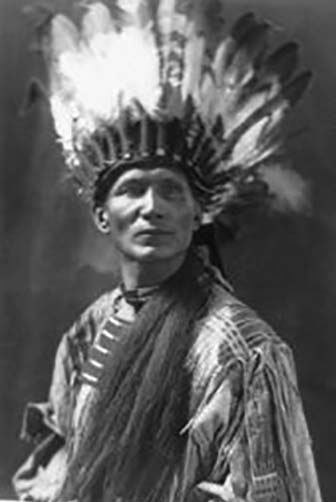
"The true Indian sets no price upon either his property or his labor. His generosity is limited only by his strength and ability. He regards it as an honor to be selected for difficult or dangerous service and would think it shameful to ask for any reward, saying rather: "Let the person I serve express his thanks according to his own bringing up and his sense of honor. Each soul must meet the morning sun, the new sweet earth, and the Great Silence alone!. What is Silence? It is the Great Mystery! The Holy Silence is His voice!
Whenever, in the course of the daily hunt, the hunter comes upon a scene that is strikingly beautiful or sublime -- a black thundercloud with the rainbow's arch above the mountain, a white waterfall in the heart of a green gorge, a vast prairie tinged with the blood-red of the sunset -- he pauses for an instant in an attitude of worship.
He sees no need for setting apart one day in seven as a holy day, because to him all days are God's days.
The first American mingled with his pride a singular humility. Spiritual arrogance was foreign to his nature and teaching. He never claimed that the power of articulate speech was proof of superiority over the dumb creation; on the other hand, it is to him a perilous gift.
Children must learn early the beauty of generosity. They are taught to give what they prize most, that they may taste the happiness of giving"
The Books of Charles A. Eastman (Ohiyesa)

Every age, every race, has its leaders and heroes. There were over sixty distinct tribes of Indians on this continent, each of which boasted its notable men. The names and deeds of some of these men will live in American history, yet in the true sense they are unknown, because misunderstood. I should like to present some of the greatest chiefs of modern times in the light of the native character and ideals, believing that the American people will gladly do them tardy justice.
It is matter of history that the Sioux nation, to which I belong, was originally friendly to the Caucasian peoples which it met in succession-first, to the south the Spaniards; then the French, on the Mississippi River and along the Great Lakes; later the English, and finally the Americans. This powerful tribe then roamed over the whole extent of the Mississippi valley, between that river and the Rockies. Their usages and government united the various bands more closely than was the case with many of the neighboring tribes.
During the early part of the nineteenth century, chiefs such as Wabashaw, Redwing, and Little Six among the eastern Sioux, Conquering Bear, Man-Afraid-of-His-Horse, and Hump of the western bands, were the last of the old type. After these, we have a coterie of new leaders, products of the new conditions brought about by close contact with the conquering race.
This distinction must be borne in mind -- that while the early chiefs were spokesmen and leaders in the simplest sense, possessing no real authority, those who headed their tribes during the transition period were more or less rulers and more or less politicians. It is a singular fact that many of the "chiefs", well known as such to the American public, were not chiefs at all according to the accepted usages of their tribesmen. Their prominence was simply the result of an abnormal situation, in which representatives of the United States Government made use of them for a definite purpose. In a few cases, where a chief met with a violent death, some ambitious man has taken advantage of the confusion to thrust himself upon the tribe and, perhaps with outside help, has succeeded in usurping the leadership.
Indian Heroes and Great Chieftains
The following Chiefs and Indian Heros are the first hand recollections of Ohiyesa (Dr. Charles Eastman).
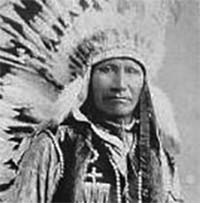
Chief American Horse
In early life he was a clownish sort of boy among the boys -- an expert mimic and impersonator. This talent made him popular and in his way as a leader.
Crazy Horse/Tashunkewitko, Oglala
He was an uncommonly handsome man. While not the equal of Gall in magnificence and imposing stature, he was physically perfect, an Apollo in symmetry.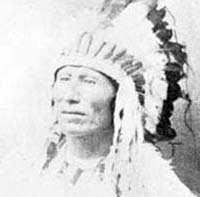
Dull Knife, Cheyenne Chief
The life of Dull Knife, the Cheyenne, is a true hero tale. Simple, child-like yet manful, and devoid of selfish aims, or love of gain, he is a pattern for heroes of any race.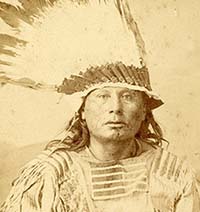
Chief Gall of the Sioux Nation
Chief Gall was one of the most aggressive leaders of the Sioux nation in their last stand for freedom, considered by both Indians and whites to be a most impressive type of physical manhood.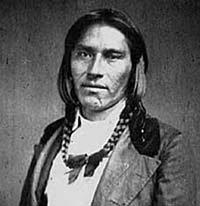
Hole-in-the-Day, Ojibway Chief
This gifted man inherited his name and much of his ability from his father, who was a war chief among the Ojibway.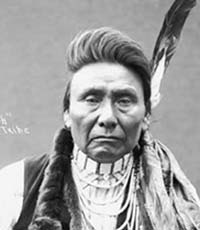
Chief Joseph, Nez Perce
The Nez Perce were a peaceful nation spread from Idaho to Northern Washington. The tribe had maintained good relations with the whites after the Lewis and Clark expedition.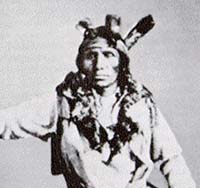
Chief Little Crow
It was on account of his father's name, mistranslated Crow, that he was called by the whites "Little Crow." His real name was Taoyateduta, His Red People.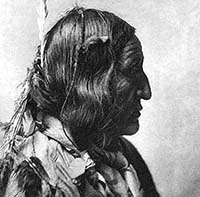
Little Wolf Cheyenne Chief
If any ever demonstrated their physical and moral courage beyond cavil, it was this race of purely American heroes, among whom Little Wolf was a leader.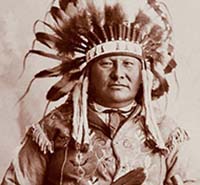
Rain-in-the-Face, Sioux Warrior
"Friend," I said, "even if a man is on a hot trail, he stops for a smoke and in the good old days, before the charge there was a smoke!"
Red Cloud, Sioux Chief
The young Red Cloud is said to have been a fine horseman, of high bearing and unquestionable courage, gentle and courteous in everyday life.1. Chief American Horse 2. Crazy Horse/Tashunkewitko, Oglala 3. Dull Knife, Cheyenne Chief 4. Chief Gall of the Sioux Nation 5. Hole-in-the-Day, Ojibway Chief 6. Chief Joseph, Nez Perce 7. Chief Little Crow 8. Little Wolf Cheyenne Chief 9. Rain-in-the-Face, Sioux Warrior 10. Red Cloud, Sioux Chief 11. ROMAN NOSE 12. SITTING BULL 13. SPOTTED TAIL 14. TAMAHAY 15. TWO STRIKE
Related Stories:
The following lists catalog the specific articles, stories, legends and research materials of this website.
American Indian Topics | American Indian Products | American Indian Tribes
Native American Topics | Indigenous Peoples’ Literature
